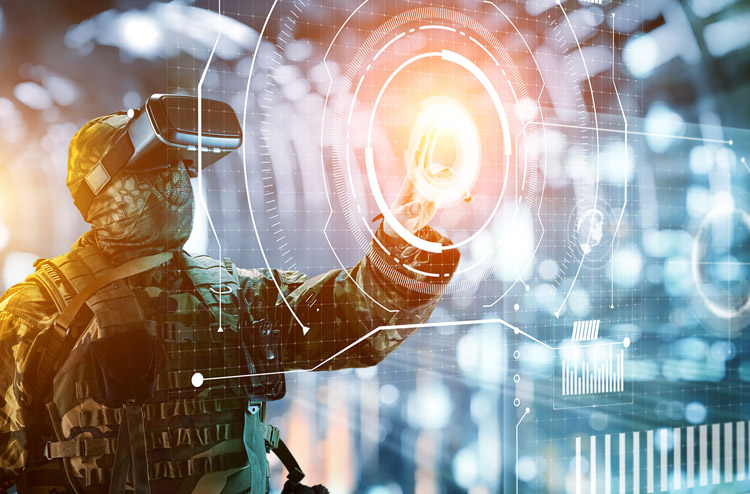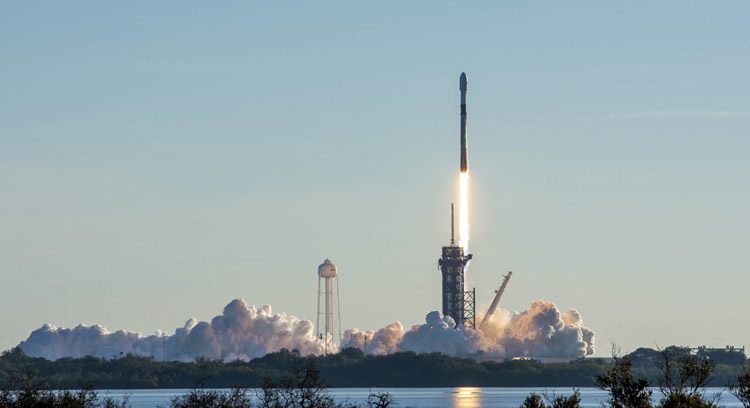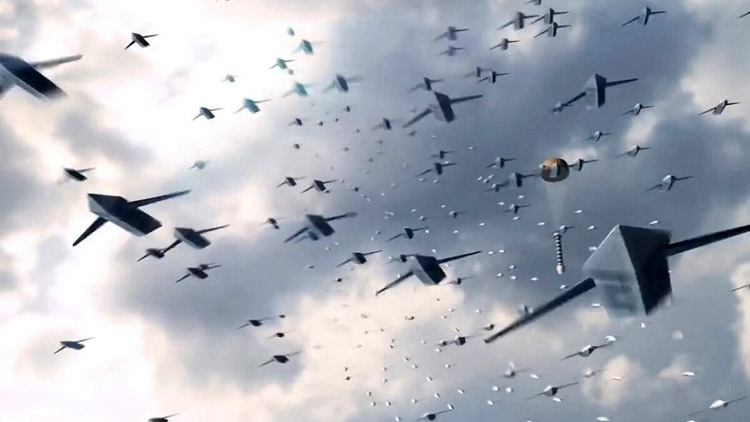INDIAN ARMED FORCES CHIEFS ON OUR RELENTLESS AND FOCUSED PUBLISHING EFFORTS

The insightful articles, inspiring narrations and analytical perspectives presented by the Editorial Team, establish an alluring connect with the reader. My compliments and best wishes to SP Guide Publications.

"Over the past 60 years, the growth of SP Guide Publications has mirrored the rising stature of Indian Navy. Its well-researched and informative magazines on Defence and Aerospace sector have served to shape an educated opinion of our military personnel, policy makers and the public alike. I wish SP's Publication team continued success, fair winds and following seas in all future endeavour!"

Since, its inception in 1964, SP Guide Publications has consistently demonstrated commitment to high-quality journalism in the aerospace and defence sectors, earning a well-deserved reputation as Asia's largest media house in this domain. I wish SP Guide Publications continued success in its pursuit of excellence.
Man behind the Machine
The problems in achieving effective soldier-machine mix are both technical and psychological in nature, especially when dealing with adaptive machines intelligence systems
 |
The Author is Former Director General of Information Systems and A Special Forces Veteran, Indian Army |

Rapid technological advances are transforming the battlefield. Artificial Intelligence (AI) is breaking barriers by revolutionising industries (both military and civil) with AI applications helping solve complex problems. AI and edge computing play a very important role in new age warfare – across all military operations in air, land, sea, space and cyber. AI-driven image processing and its ability to analyse different characteristics of objects, including size, weight, speed and more, gives military commanders a better situational awareness and ability to accurately determine whether an object seen from far or on the radar is a threat or not.
AI in defence can change combat and conflict at the sub-conventional level as well. For example, autonomy in weapon systems, intelligence, surveillance and reconnaissance (ISR) and data management become a huge asset in counter terrorism operations and killing terrorists, installing counter terrorism measures and protecting own soldiers. Space figures prominently in new age warfare. The war in Ukraine is witnessing extensive use of AI with thousands of low earth satellites of Elon Musk’s Starlinks assisting drones, weapon systems and combatants plus providing commanders with the shortest possible observe, orient, decide, act (OODA) loop.
Government support and plans to modernise the military through AI have helped create an atmosphere of cutting-edge innovation and collaboration
Developed countries including the US, Russia, China, France, Israel and the UK are all investing heavily in AI, and so is India. Government support and plans to modernise the military through AI have helped create an atmosphere of cutting-edge innovation and collaboration. The military is combining drones and AI to monitor border areas, identify risks, and communicate threat information to the relevant reaction teams. In addition are aerial and land-based robots as weapon platforms (swarms included), troops and load carriers. AI can be a huge asset in stopping terrorism, installing counter-terrorism measures and protecting soldiers. India ranks 11 in the world in terms of annual robot installations. The Indian Army has been using AI remotely-operated weapon stations, robotic mine detectors, intrusion detection systems, facial recognition, language translation (Mandarin to English) and the like.

However, amid all the cacophony of new and emerging technologies, many policy makers tend to believe that bulk of the military tasks and most fighting can be taken on by AI-enabled machines, reducing the importance of the soldiers that much. The hardcore even think that future wars will be fought between machines, which is also the case in India to certain extent with perpetual calls to cut the ‘Army flab’ although such periodic exercises have skinned the cutting to the bone; which was aggravated by stopping recruitment for full two years in order to facilitate induction of ‘Agniveers’. The shortfall is likely to continue because some 60,000 soldiers retire from the Army alone annually and some 45,000 Agniveers are planned to be inducted after basic recruit training shortened drastically to four months, which is grossly inadequate.
We must acknowledged that 100 per cent automation of the battlefield is not achievable and in our case achieving high degree of automation of the battlefield is also decades away. As important is to understand that achieving the requisite soldier–machine systems mix is a complex issue which even developed nations are struggling to perfect. The problems in achieving effective soldier-machine mix are both technical and psychological in nature, especially when dealing with adaptive machines intelligence systems. In addition is the soldier’s cognitive limitations that would arise in the control and interaction interface linking soldier controllers and machine systems they control.
The war in Ukraine is witnessing extensive use of AI with thousands of low earth satellites of Elon Musk’s Starlinks assisting drones, weapon systems and combatants, providing commanders with the shortest possible Observe, Orient, Decide, Act (OODA) loop.
The above should drive home the point to our policy makers how important the soldier behind the machine is; equally important, if not more than the machine, in order to perfect the soldier-machine mix. The military, particularly the Army, need to think twice what type “intelligent” soldier would fit the bill for the future battlefield with increasing levels of automation. Would poorly trained Agniveers become a liability, as is apparent whether because of political skullduggery, bureaucratic inertia or mix of both?

But this is not the only reason why the man behind the machine would remain important. With the AI-enabled machines employed en-masse in the Ukraine war with the domains of ground, air, space, cyber and the electromagnetic fully activated, the importance of the soldier behind the machine has become even more prominent.
Ramon “CZ” Colon-Lopez, Senior Enlisted Advisor Chairman to the Chairman (SEAC) to the US Joint Chiefs of Staff, has recently stated that looking at a year of conflict in Ukraine since Russia invaded, he is convinced of “the decisive advantage that the human brings to combat”. Ramon “CZ” Colon-Lopez has spent most of his career in special operations He noted that the number one rule in the military community is that “humans are more important than hardware”.
The military, particularly the Army, need to think twice what type “intelligent” soldier would fit the bill for the future battlefield with increasing levels of automation.
Moreover, unlike the US which has no borders to defend, India has extensive borders, including over difficult terrain in mountains and high altitude. We also face an anti-India China-Pakistan nexus and therefore a collusive two-front war. No doubt advanced technologies, including AI-enabled drones, can be used to “support” an attack by ground forces. But technologies cannot capture ground or defend ground. We need to get real. There has never been an instance where technology has won a war by itself anywhere, be it Ngorno-Karabakh or Ukraine. There can be no one better than SEAC Ramon “CZ” Colon-Lopez highlighting the importance of man-behind-the-machine in the Ukraine war.
Our policy makers need to also understand the constraints of drones. Can drone supplement four soldiers carrying their wounded colleague to the evacuation point across a minefield or in other contingencies? What is the carrying capacity of drones, costs and can they fly in the battle zones without being hit by enemy weapons. What if they are hit and the soldier strength has been slashed due to induction of drones and robots? It is high time such contingencies are pragmatically taken into account.
In the final analysis, it needs no elaboration that the man behind the machine is more important than the machine itself and this equation will not change in the foreseeable future.





